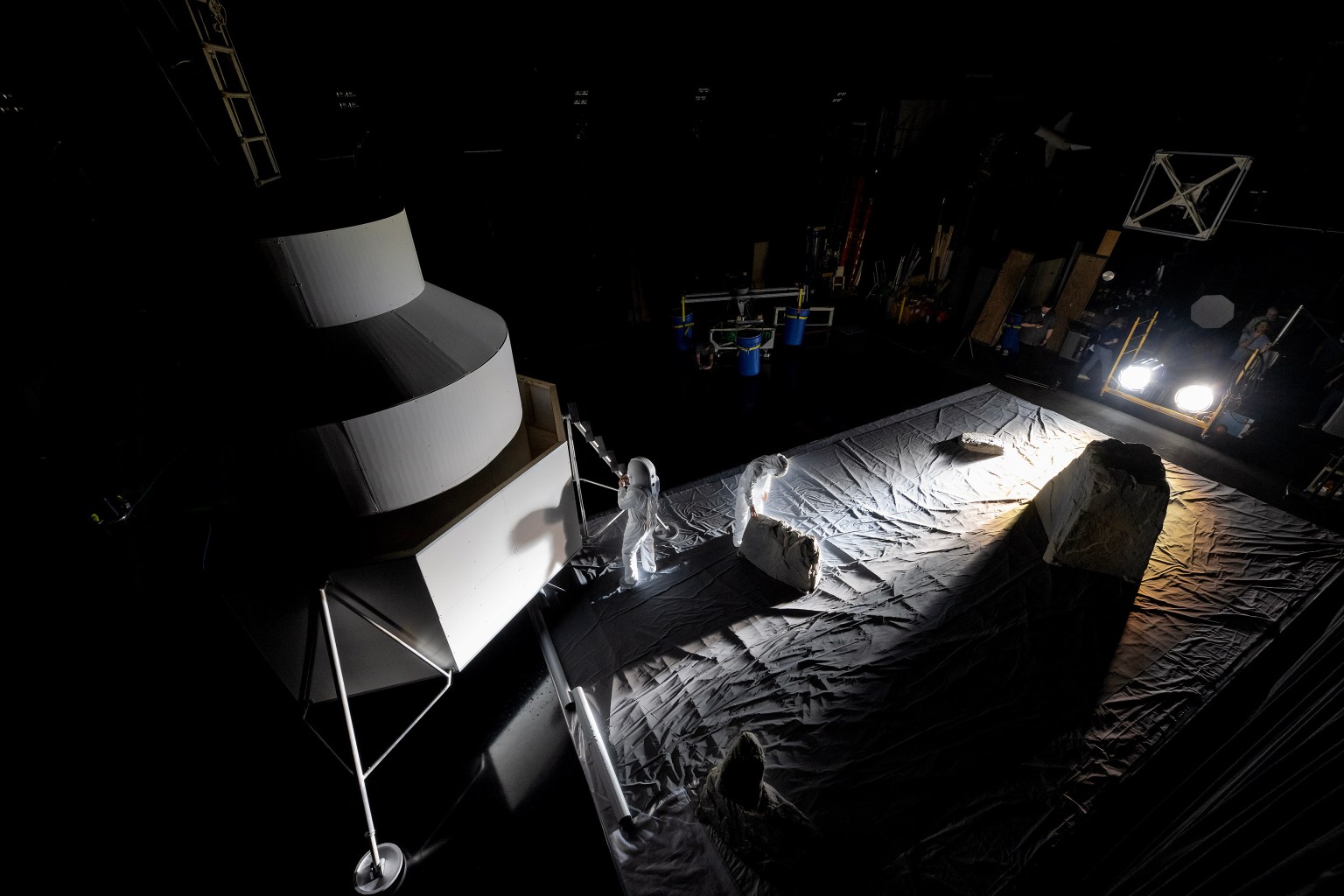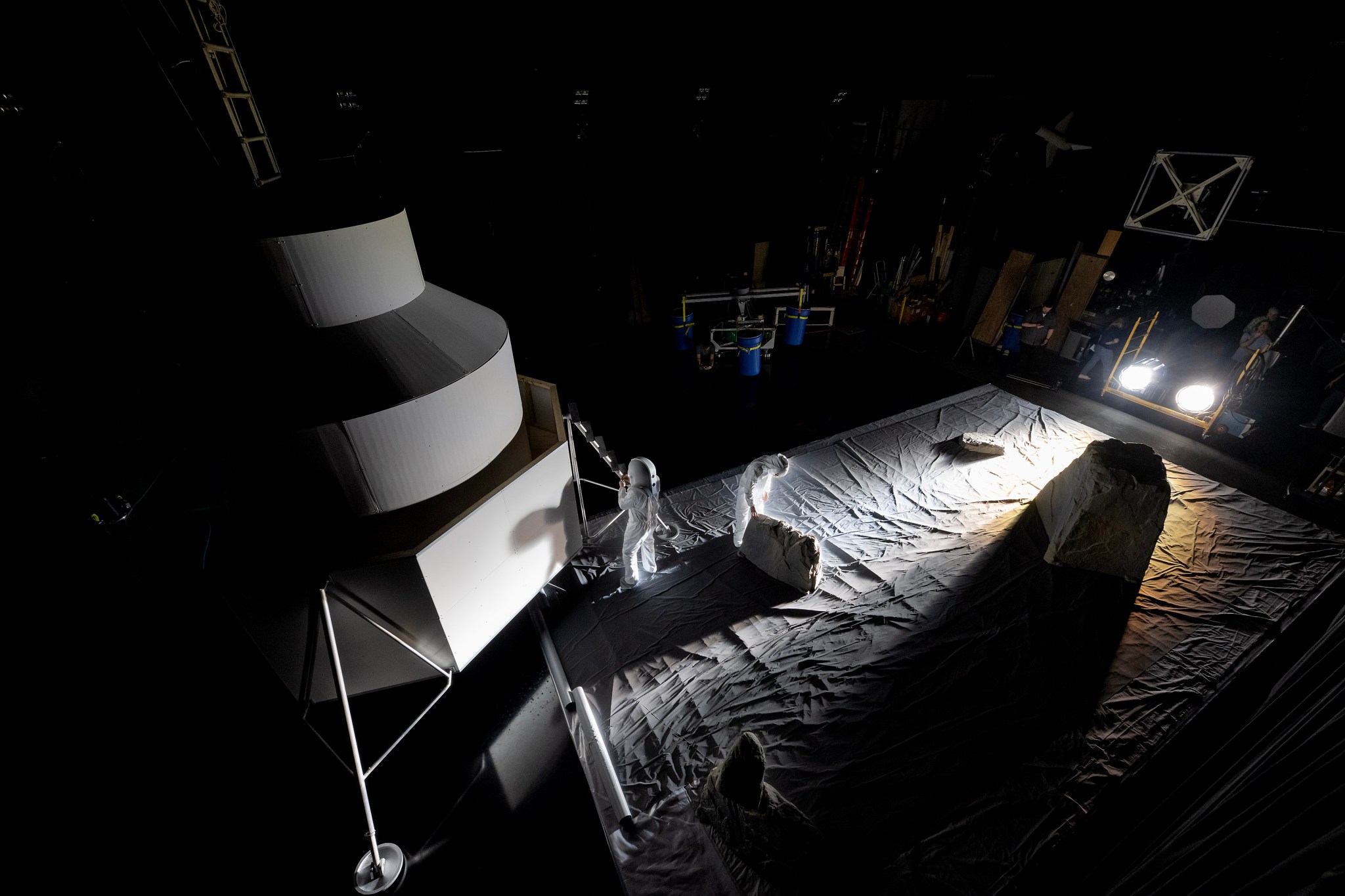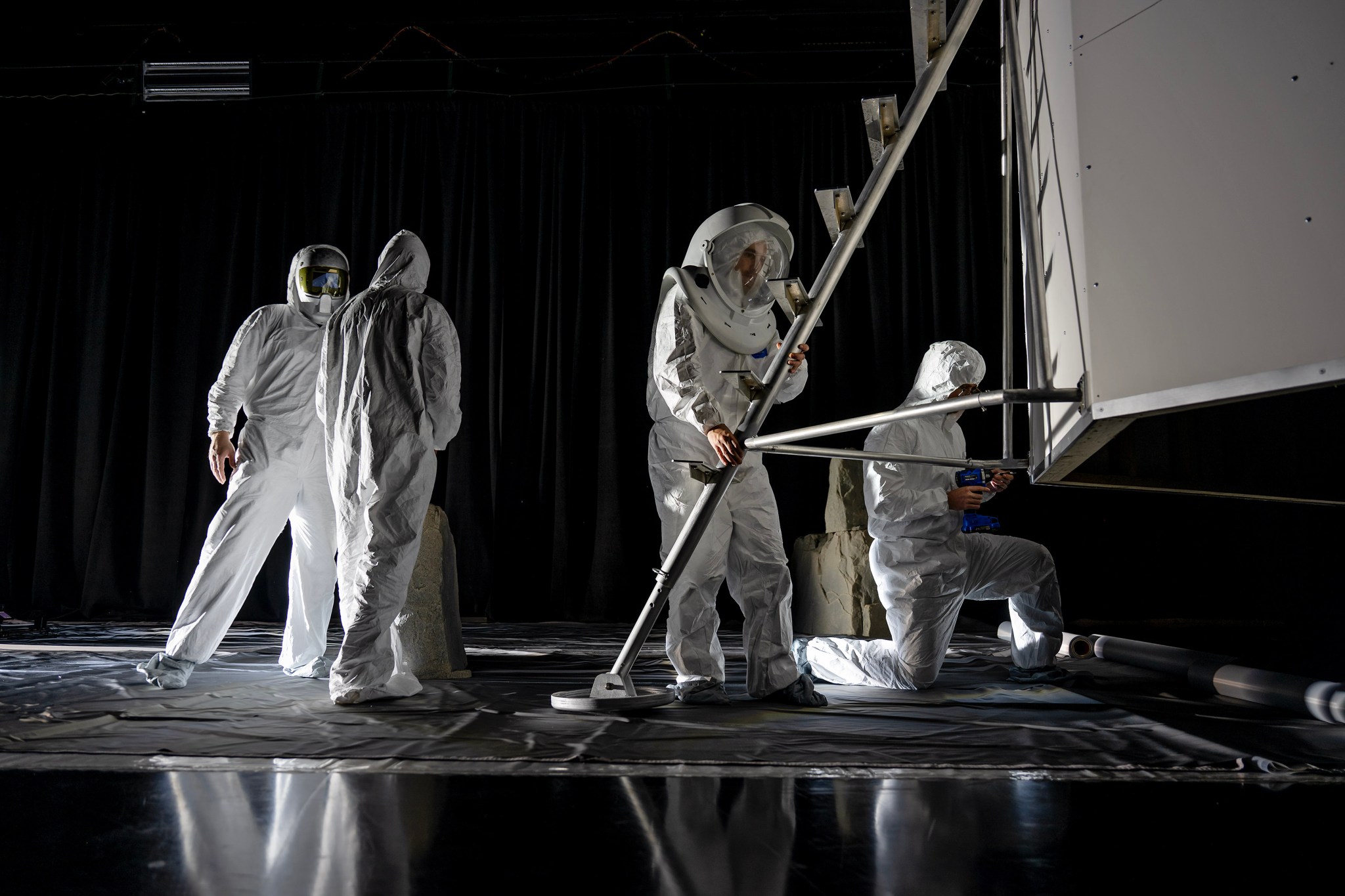
Better understanding the lunar lighting environment will help NASA prepare astronauts for the harsh environment Artemis III Moonwalkers will experience on their mission. NASA's Artemis III mission will build on earlier test flights and add new capabilities with the human landing system and advanced spacesuits to send the first astronauts to explore the lunar South Pole and prepare humanity to go to Mars.
Using high-intensity lighting and low-fidelity mock-ups of a lunar lander, lunar surface, and lunar rocks, NASA engineers are simulating the Moon's environment at the Flat Floor Facility to study and experience the extreme lighting condition. The facility is located at NASA's Marshall Space Flight Center in Huntsville, Alabama.

"The goal is really to understand how shadows will affect lander visual inspection and assessment efforts throughout a future crewed mission," said Emma Jaynes, test engineer at the facility. "Because the Flat Floor Facility is similar to an inverted air hockey table, NASA and our industry partners can rearrange large, heavy structures with ease - and inspect the shadows' effects from multiple angles, helping to ensure mission success and astronaut safety for Artemis III."
Data and analysis from testing at NASA are improving models Artemis astronauts will use in preparation for lander and surface operations on the Moon during Artemis III. The testing also is helping cross-agency teams evaluate various tools astronauts may use.
The 86-foot-long by 44-foot-wide facility at NASA is one of the largest, flattest, and most stable air-bearing floors in the world, allowing objects to move across the floor without friction on a cushion of air.
Test teams use large, 12-kilowatt and 6-kilowatt lights to replicate the low-angle, high contrast conditions of the lunar South Pole. Large swaths of fabric are placed on top of the epoxy floor to imitate the reflective properties of lunar regolith. All the mock-ups are placed on air bearings, allowing engineers to easily move and situate structures on the floor.

"The Sun is at a permanent low angle at the South Pole of the Moon, meaning astronauts will experience high contrasts between the lit and shadowed regions," Jaynes said. "The color white can become blinding in direct sunlight, while the shadows behind a rock could stretch for feet and ones behind a lander could extend for miles."
The laboratory is large enough for people to walk around and experience this phenomenon with the naked eye, adding insight to what NASA calls 'human in-the-loop testing.
NASA is working with SpaceX to develop the company's Starship Human Landing System to safely send Artemis astronauts to the Moon's surface and back to lunar orbit for Artemis III.
Through the Artemis campaign, NASA will send astronauts to explore the Moon for scientific discovery, economic benefits, and to build the foundation for the first crewed missions to Mars - for the benefit of all.






